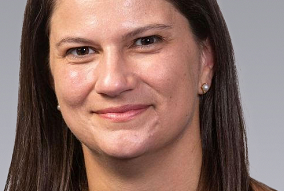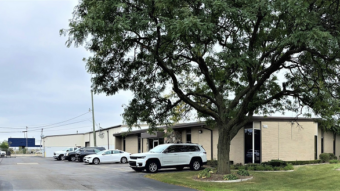David Levy, chairman of the real estate section at Omaha-based legal firm Baird Holm, sees plenty of positive signs when he looks at the city’s commercial real estate industry. Deals are being made in all commercial sectors. And the best news? Levy told Midwest Real Estate News that there are few signs that Omaha’s solid commercial real estate market is headed for a slowdown.
Midwest Real Estate News: Is it safe to say that commercial real estate activity in Omaha continues to increase? David Levy: I would say so. Business of all kinds related to commercial real estate has picked up. There is more lending activity. There is more development activity. Mixed-use and multi-family residential are strong. Industrial is strong. Retail is maybe a little less strong.
MWREN: How about the office market? How is that sector faring in Omaha? Levy: I think with office you have to dig down a little deeper. There has not been a lot of new Class-A office space built or coming on the market in Omaha recently. There is still a decent vacancy rate in that class. That segment of the office market might not be as strong as the others yet. Class-A is lagging more than Class-B or Class-C.
MWREN: What are some of the reasons for the continued strength of Omaha’s commercial real estate market? Levy: This is an area with a lot of pent-up demand. For example, Omaha is widely thought of as being overbuilt when it comes to pure single-use retail. So there has not been as much demand for new resources of that type, either through new construction of repurposing. But the market is not yet saturated for mixed-use multi-family residential. Industrial is thought of to be under-supplied right now. Efforts are underway to create new industrial areas in the Omaha market. So a lot is supply and demand. There aren’t that many segments in Omaha that are considered to be overbuilt.
MWREN: Why is mixed-use so popular now in Omaha? Levy: It’s just a trend where people are figuring out that they like mixed-use developments. They like walkable neighborhoods. They like density. They like more of an urban feel, and that is probably something that Omaha is a bit behind in. It goes back to supply and demand. There is a trend now that increases the demand for those type of uses, and maybe negatively impacts demand for classic strip-center retail uses.
MWREN: Is there excitement in Omaha about the new mixed-use, walkable developments that are being planned or coming online? Levy: I think so. It’s not without challenges, though. That’s not to say people aren’t building new single-family subdivisions in the suburbs. That is going on, too. But there is excitement about mixed-use projects here. Midtown Crossing (a seven-building mixed-use development in the Midtown section of Omaha) is an example. That development is popular and successful with people. People want to see more like it.
MWREN: Is there anything unique about Omaha that makes it a good market for developers? Levy: Land prices are reasonable here. The development process is fairly straightforward. There are not a lot of hurdles for developers to get past compared to what they might find in other markets. On the negative side, we might lack some of that critical mass that developers want. We just don’t have the kind of critical mass you have in Chicago, St. Louis or even in a Kansas City. Public transportation will be something to watch, too. We don’t have a great public transit system yet. There is talk and a work-study on what would make sense to improve it. Does a streetcar make sense? That’s a major infrastructure investment. Would that lead to another round of commercial real estate development? It certainly could. We don’t have the kind of public transportation system now that other cities we compete with already have.
MWREN: That must be an interesting discussion. Public transportation certainly seems to be an amenity more residents want today. Levy: It comes with a whole range of questions. But some employers prefer to locate in cities where employees have real options when it comes to public transportation. We’ll have to see what comes of the discussions.



